A Cultural Shift as America’s Trail Networks Take Hold
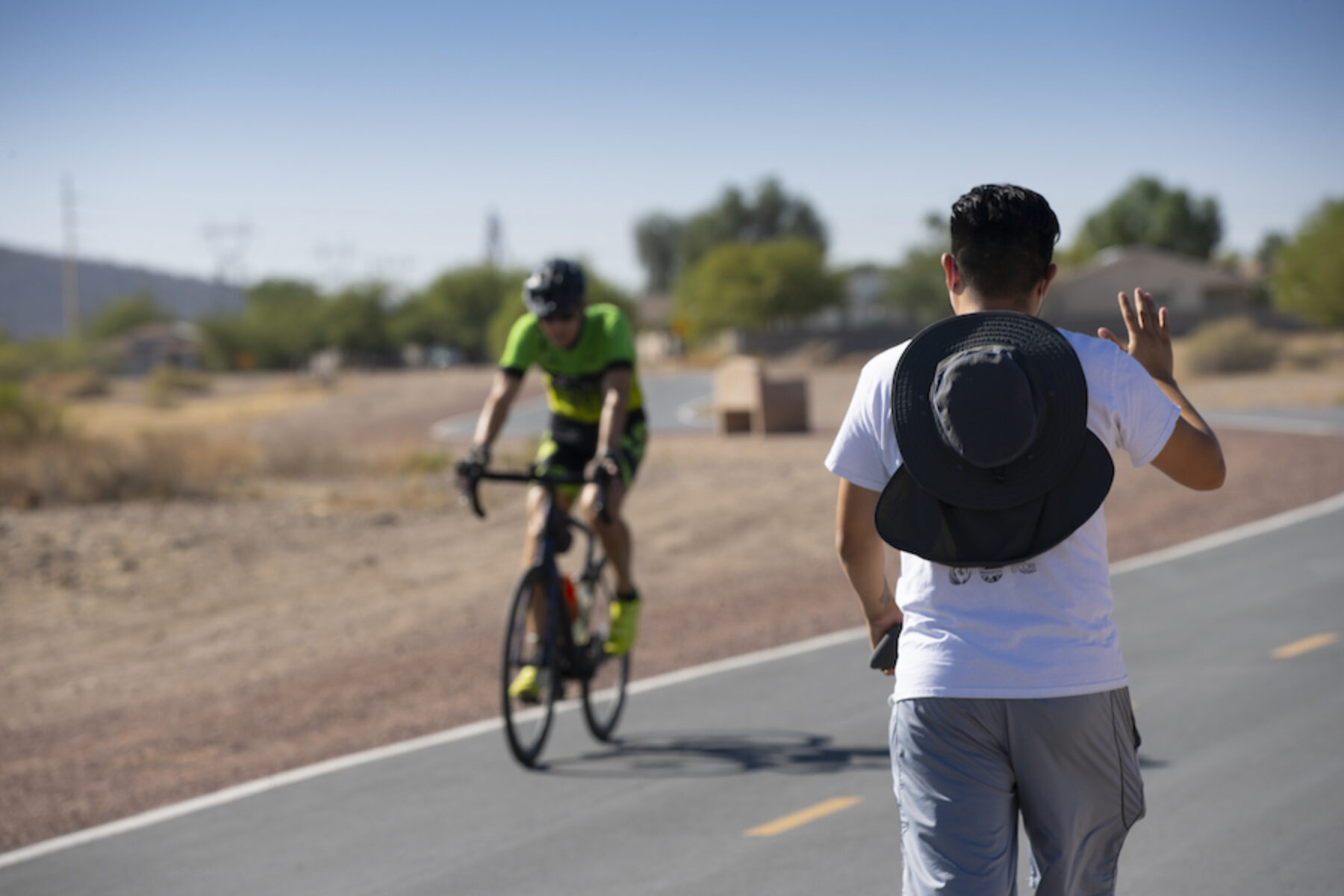
It has been described as a “tipping point,” “critical mass” and “milestone” achievement. Regardless of what it’s called, there’s no doubt that the proliferation of trail networks around the United States is significant.
After several decades of steady growth for rail-trails and multiuse trails wherever they could be achieved, trail development has taken a recent leap in everything from organization to collaboration to achievement—to the point where more than 41,400 miles of multiuse trails now exist across the nation and serve as the foundation for 150 known trail networks developing across America, and in every state, as well as Washington, D.C., and Puerto Rico.
America’s Trail Networks: An Exploration of the Nation’s Developing Trail Networks
Moving to the Mainstream
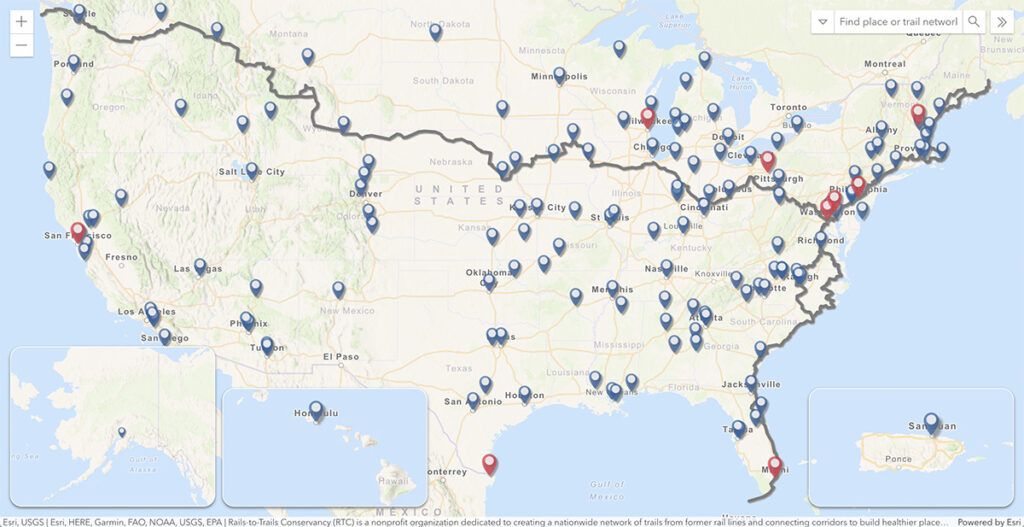
Not so long ago, a central point of pride for the trail movement was the existence of a rail-trail in every state. Certainly, it was a laudable achievement for an effort that began less than four decades ago as a then-novel idea of repurposing old, unused railroad lines into recreational trails. But in the past five to 10 years, that achievement has been surpassed again and again in places all over the country. Today, at least half of Americans (49.75%) now live in a county that is developing a trail network.
“What’s really exciting about [this research] is that this is the first real assessment of how much of this infrastructure is already in development,” said Brandi Horton, vice president of communications for Rails to Trails Conservancy (RTC). “It matters so much because it illustrates the relevance of trail networks to the nation. This is happening literally everywhere in America.”
She added, “We used to say there’s a rail-trail in every single state, and now we can say there’s at least one developing trail network in every state.”
The findings are the result of an analysis conducted by RTC to establish a benchmark for trail network development nationwide. It includes projects that are: locally adopted; in development (either planning, construction, or both); and comprise two or more multiuse trail segments or contiguous loops that provide seamless connectivity without traffic interaction.
“We used to say there’s a rail-trail in every single state, and now we can say there’s at least one developing trail network in every state.”
—Brandi Horton, Vice President of Communications, Rails-to-Trails Conservancy
RTC released these findings on Dec. 13, 2023, alongside results from a national poll that illustrates public sentiment in support of this infrastructure, at a panel discussion hosted by WOSU Public Media in Columbus, Ohio.
“We are seeing trails and trail networks just proliferate across the country. That is one indicator of momentum. … We also wanted to know: How are people experiencing the moment?” Ryan Chao, RTC’s president, said of the research conducted by the organization. “We found that about a third of people say trail networks can make travel easier—that they would swap a car trip if they had connected trails to do so.”
RTC’s opinion poll, which was conducted online, illustrates broad public support for trail network development. The poll was implemented Sept. 14–23, 2023, by the firm Stratalys Research, with a sample size of 1,200 adults over age 18, including an oversample of 200 Black and 200 Latino respondents.
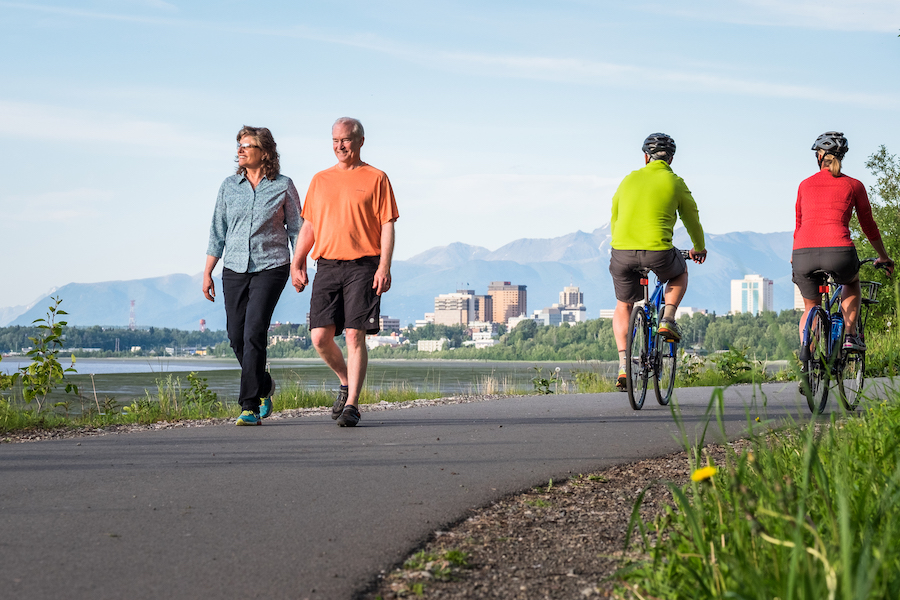
In addition to the nearly one-third of people (29%) who said that trail networks would make it easier to walk and bike where they need to go instead of drive, there was overwhelming support for spending tax dollars on trail networks that was consistent across party affiliation. In addition, four out of five people agree that tax dollars should be spent on connecting trails to each other and important destinations (81% Republicans, 84% Democrats, 81% Independents, n = 619), and half of the respondents think that the government spends too little money on walking and biking infrastructure (49%, compared with 39% on public transportation and 38% on roads).
“When we connect [trails] together into systems and networks, we can create a safe alternative for people to use them as transportation every single day, for their everyday lives,” Chao said.
‘Intentional Planning’ at Work
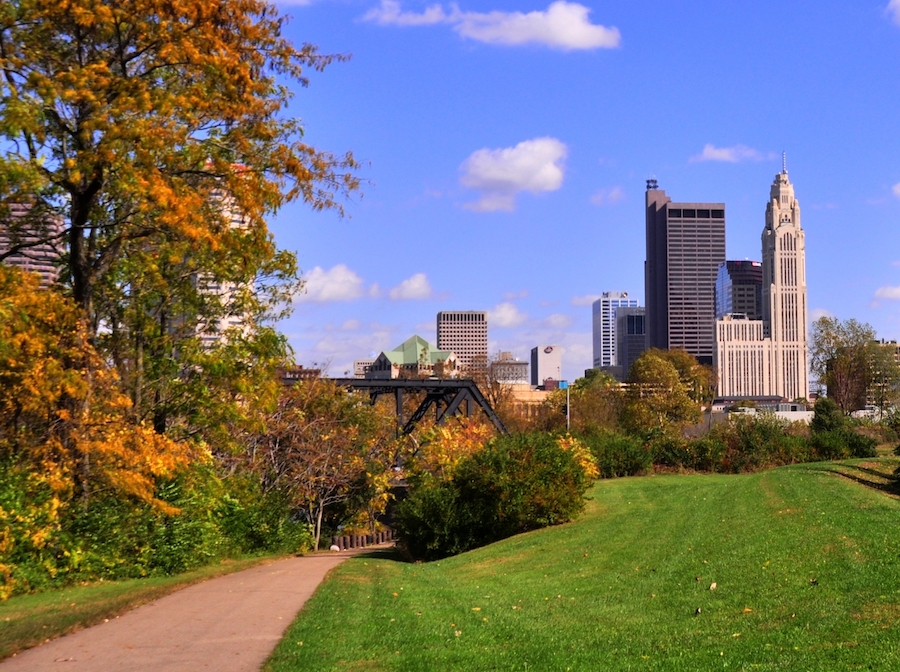
Certainly, it hasn’t happened by accident. Eric Oberg, RTC’s Midwest regional director, said he has seen an evolution in the past decade, during which a number of communities around the country have taken a more focused and intentional approach to trail development.
While the strategy was once aimed at getting a trail built “when and where we had the opportunity,” Oberg said, “What we’ve seen in the last five to 10 years is a proliferation of places that have been able to step back and say, ‘You know what? We need to be looking at this more holistically and through the lens of connectivity—how to create safe walking and biking routes that connect people to the places they want to go.’”
Using the city of Columbus as an example, Oberg said collaboration between governments and organizations helps to keep focus on the bigger picture. “[Columbus] had the vision to understand that being a leader in bringing this collaboration together was not just smart and the right thing to do, but was good business,” he said of the Mid-Ohio Regional Planning Commission (MORPC), the Columbus Recreation and Parks Department, Franklin County and RTC, which came together to form Central Ohio Greenways.
William Murdock, executive director of MORPC, noted that the collaboration has helped Columbus in its mission to “grow better as we grow bigger.”
At the center of that goal, Murdock said, are trails and connectivity. “When we [ask], ‘What do folks want?” said Murdock, “trails are at the heart of that [answer].”
Sitting at the confluence of three major trail systems—regional, statewide and nationwide—the strategic emphasis Columbus has placed on planning walking and biking infrastructure that delivers quality of place, and quality of life through network connectivity, sets the city apart, said Oberg.
Columbus enjoys a healthy trail inventory already; it’s the hub of the regional Central Ohio Greenways network, an anchor in the statewide Ohio to Erie Trail, and is positioned along the route of the cross-country Great American Rail-Trail®, which stretches 3,700 miles between Washington, D.C., and Washington State. But Murdoch said the community has plenty more trail ambitions, hoping to add another 500 connected trail miles and dedicating more than $60 million to developing this infrastructure in the last funding cycle alone (compared with a more traditional $4 million annually).
Embracing Equity and Connectivity
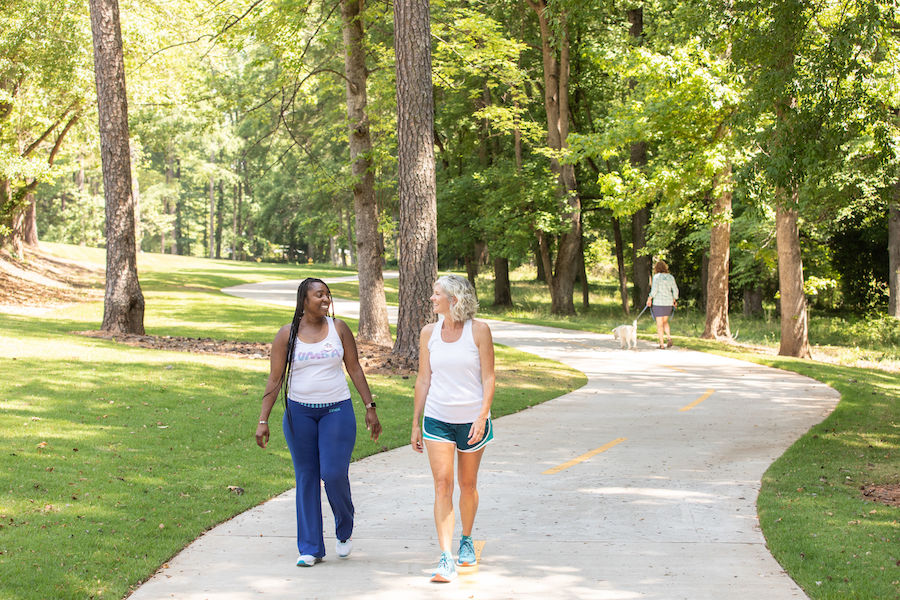
As a part of Columbus’ mission to grow better, Murdoch stressed that the city is working to bring communities that have often been left behind into the big picture of trail development.
Indeed, Oberg said equity is one of the lenses, along with connectivity, that are currently framing the development of trail networks. “We’re making sure we’re emphasizing that we need to really look where trails aren’t,” he said. “In so many places, the most underserved in our communities are also the places that don’t have trail access.”
Equity and access to green spaces, and safe places to walk and bike in a community, are increasingly becoming a focal point of the conversation. Leading the dialogue are organizations like Latino Outdoors, which is working to inspire, connect and engage Latino communities. One of its programs, Vamos Outdoors, focuses on creating a welcoming and family-friendly environment with free outings that weave together aspects of culture, community, wellness and connection.
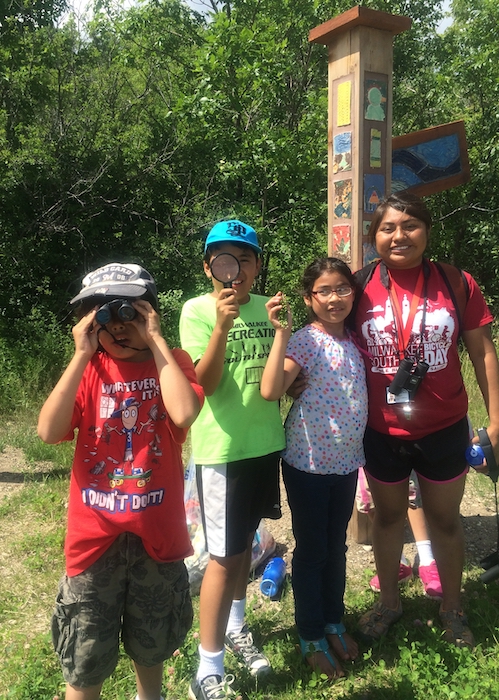
“One of the biggest ways we do that is, we like to center our latinidad—cultural threads that really tie us all altogether—to create that relevancy, to create that safe space, so that people feel comfortable and welcomed and empowered to be with us when they are in those outdoor spaces. And then hopefully, eventually, empowered and confident on their own,” said Mel Mendez, Latino Outdoors’ New York and Northeast regional coordinator.
“This is an opportunity to see the outdoors in our own way, and an opportunity to feel confident and feel safe in these green spaces that have historically under-represented or misrepresented BIPOC communities, tragically, for a long time. [Creating community around this infrastructure] takes a lot of work. It takes a lot of resource investment and a lot of relationship building and connecting,” Mendez said.
Once-in-a-Generation Moment
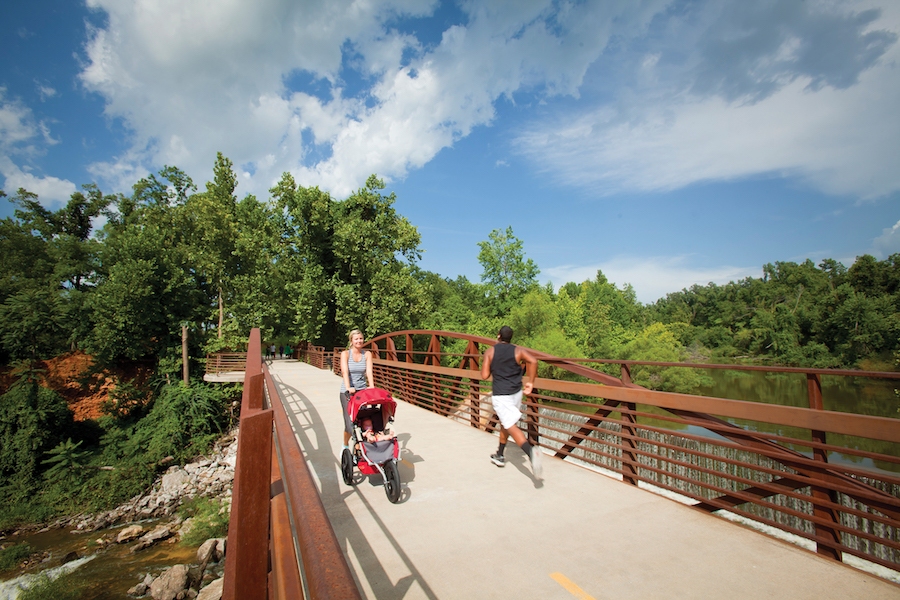
Along with being a milestone achievement, Horton and Oberg emphasized that the 150 trail-network mark is a way to emphasize the importance of dedicated funding for active transportation connectivity. These findings come as the U.S. Department of Transportation prepares to release the first-ever call for applications for the Active Transportation Infrastructure Investment Program, which was authorized as part of the Bipartisan Infrastructure Law in 2021. This new federal program is the first to dedicate funding to the connectivity of active transportation infrastructure.
According to RTC, the scale and scope of the nation’s trail networks illustrate the urgency to fully fund the program, which only received a portion of the authorized funding in the 2023 federal budget. Congressional champions and partners across the country are continuing to advocate for full program funding, which is necessary to complete safe routes at a national scale and more quickly unlock the safety, climate and equity benefits of this infrastructure—especially critical at a time when thousands of pedestrians and cyclists are dying in crashes each year.
“As we’re sharing this news—all of the federal funding, all of the demand for this infrastructure, this once-in-a-generation moment that we’re in [right now]—we recognize it would not have been possible even five years ago,” Horton said. “The fact that we now have the level, the scale of places ready to receive the funding, put it to work, and the public saying, ‘Hey, we want more places to walk and bike … we want to be able to do this in our everyday lives’—that makes the funding more meaningful. More actionable. It actually will have a formative effect.”
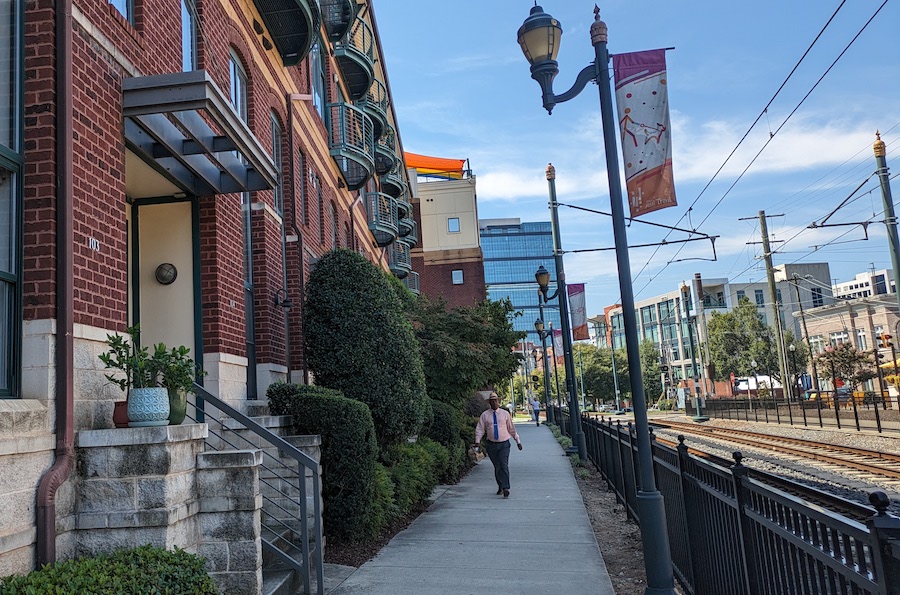
RTC’s research shows that the investments pay off in a dramatic way. “Why networks matter—when trails connect, the use of those trails goes up by 80%,” Chao said. “And thus, the benefits just compound.”
“We are in a truly exciting moment and one that we can leverage to even more completely connect the nation by trail,” Chao added.
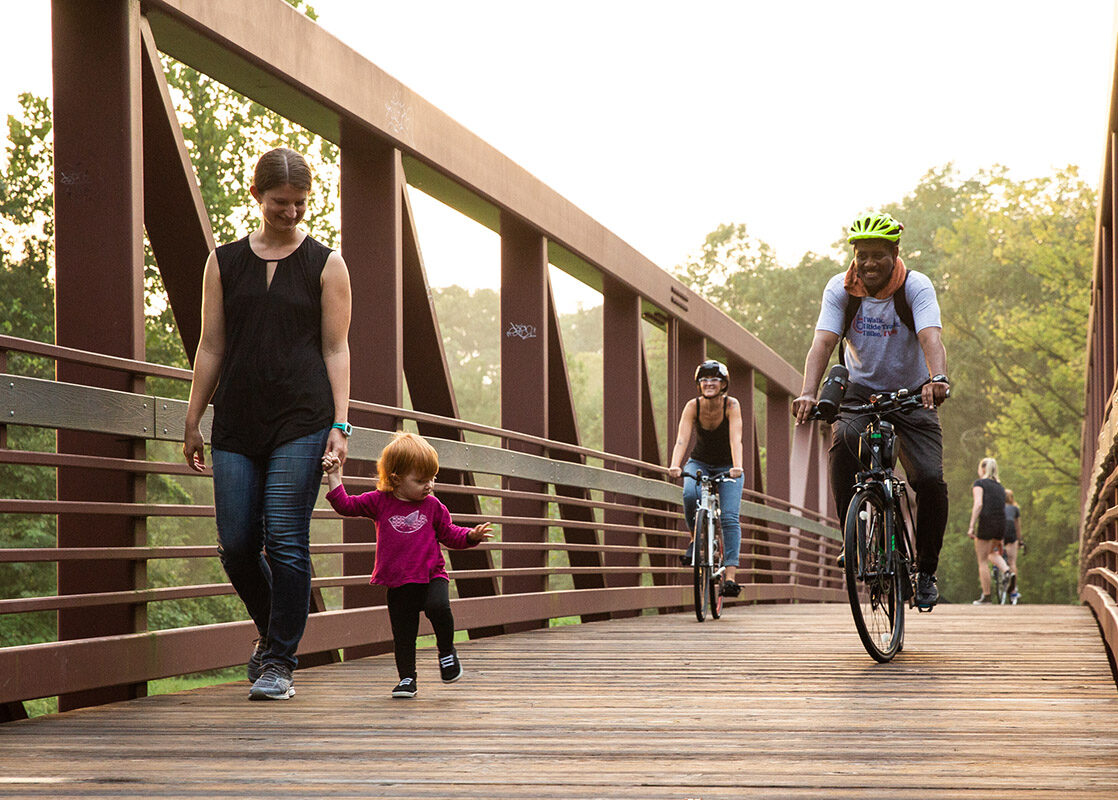
Donate
Everyone deserves access to safe ways to walk, bike, and be active outdoors.